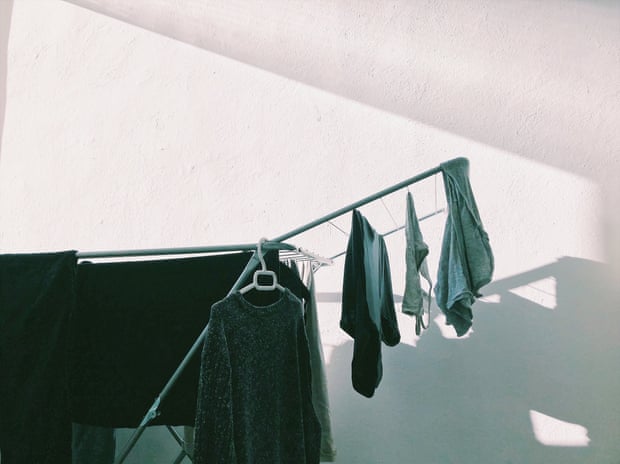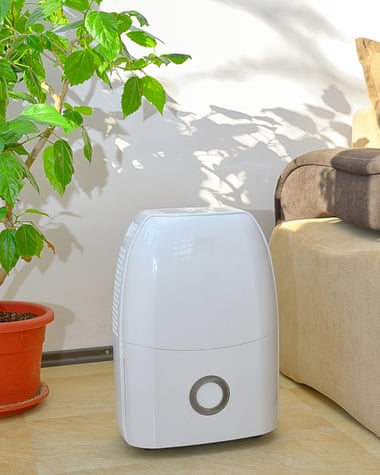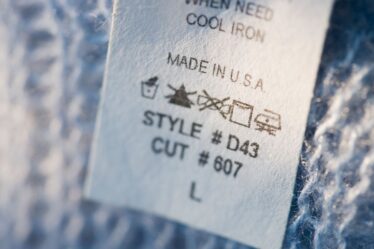
As the year rolls on with an unsettling combination of unpredictable weather and rising energy prices, when and how to dry laundry has become increasingly complicated. While there is a time and place for using a clothes dryer, line drying is much better for the environment, the longevity of your wardrobe and your power bill.
According to experts, your preference should always be to dry your clothes outside in the shade. But when the weather doesn’t permit this, a clothes rack in a well-ventilated space will suffice.
The basics
Start by removing as much excess moisture as possible. As long as your garment can handle a spin cycle, Ashley Iredale from the consumer platform Choice says you can use the highest spin speed on your washing machine. For delicate or woollen garments that have to be handwashed, gently squeeze out as much water as possible or lay them down on a flat towel and roll them up slowly, applying pressure.
When hanging out your laundry, George Chan, a fashion technician at RMIT University, says to spread your garments out as much as possible and to stagger your clothing according to weight. Thicker clothing should be hung up higher and garments should never be placed on top of each other.
The details
The smoother your wet clothes are on the rack or clothesline, the crisper they will be when dry. This includes ensuring that shirt cuffs and socks are completely turned out, and collars are smoothed flat. This will also help them dry faster. Knitwear should always be laid flat and in shape, either on a rack or towel, especially if it is particularly heavy.
Hanging some garments like shirts or trousers on a coat hanger with the buttons done up and the legs or sleeves smoothed out can reduce (or eliminate) ironing time. Chan says to make sure your coat hangers are strong enough to hold the weight of any wet garment and wide enough to accommodate their width to avoid misshapen shoulders. Be mindful of hanging wet clothes on stained wood, dyed cloth or wire hangers, as dye transfers and rust can both cause stains.
Installing a line
Gary Nickless, owner of Lifestyle Clotheslines, says the main thing to consider when installing a clothesline is space. While a Hills hoist might have a nostalgic or romantic appeal, he says, “it’s not a practical option, which is why folding, wall-mounted options have become the most popular models”. Another great option for a balcony or if you are short on yard space is a retractable clothesline.
Next, Nickless says to make sure whatever you choose provides enough drying space for your needs. For instance, if you tend to do bigger loads of laundry (which is recommended to save on resources), or only do laundry once a week, you’ll need more space.“As a general rule, 35 to 40 metres of space is good for a family of four, and 45 to 50 metres ideal for a family of five,” he says.
He also recommends Australians buy locally made clotheslines to ensure they have been designed with Australia’s weather conditions in mind. Given the unseasonal rain some parts of the country are experiencing and that sunlight can fade or age your clothes, he suggests getting a cover for your clothesline, like these ones from Clevacover. “This allows for year-round drying, as they are fully waterproof, plus make a great shade area in the hot summer months to protect your clothes.”
Finally, Nickless suggests investing in some pegs to keep your clothes on the line – like a hardy stainless steel variety that last far longer than traditional plastic pegs.
What about indoors?
A portable clothes rack is the next best thing to line drying. Since most of these are designed to be folded up and stowed away, look for one made of sturdy but lightweight materials so it’s easy to manoeuvre but isn’t flimsy. It also needs to be waterproof, so steel, aluminium or sealed woods are ideal.

Like with a clothesline, you need to consider the available space in your home and the capacity you need the rack to have. A rack with lots of cross bars at a range of heights will be good for underwear and T-shirts, higher bars are better for bigger items like towels or trousers and flat bars or shelves will be good for drying knitwear.
Drying racks vary hugely in durability, price and quality, so it is worth spending time reading reviews of different models online before buying one and seeing what is available secondhand. A high-quality used drying rack may last longer than a flimsier option bought new.
Handling the heat
There are two drawbacks to drying clothes inside. The first is that water vapour from your clothes can exacerbate condensation and mould in your home. The second is the time it takes.

It’s tempting to deal with the latter by placing your clothes rack near a heater. Iredale says: “Generally it’s safe to point an electric heater at a drying rack, provided it’s not too close – you don’t want water dripping into the heater, and you certainly don’t want your clothes getting so hot they’ll catch fire.”
Chan says if you’re going to do this, you need to be mindful of the fabric content. He says you should not put anything flammable, like 100% nylon or 100% polyester fabrics, near a heater nor leave them drying near one unattended for a long time.
Never drape clothing directly over the heater, as this poses a serious fire hazard. “You’re not only at risk of the fabric or the heater itself catching fire – the heater could potentially overheat and deform, falling on a child, pet, or something potentially highly flammable,” Iredale says.
He says a better option is a dehumidifier that can blow dry hot air over your laundry. Dehumidifiers are designed to remove moisture from the air and should “speed up the drying time nicely”. An electric fan can also help circulate air, which is useful in particularly humid environments.



